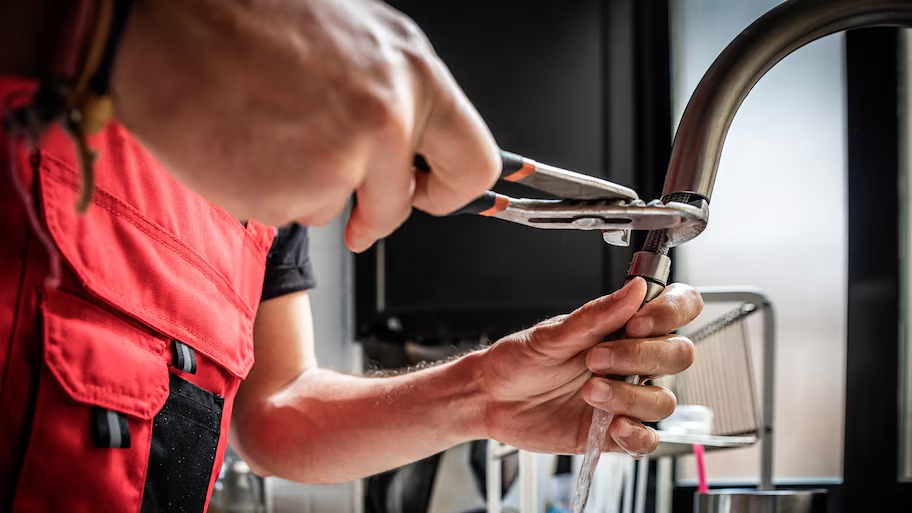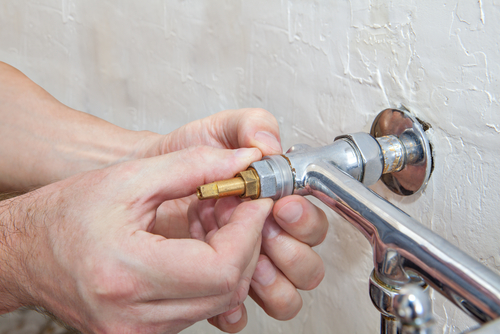Learning the Value of Repairing a Malfunctioning Faucet
Learning the Value of Repairing a Malfunctioning Faucet
Blog Article
Are you looking for information involving Why Are My Faucets Dripping (And Can I Fix It Myself)??

Dripping faucets may appear like a small aggravation, yet their influence goes beyond simply the nuisance of the noise. From drainage to incurring unnecessary monetary costs and health risks, ignoring a dripping tap can bring about numerous effects. In this post, we'll look into why it's vital to address this common household concern immediately and efficiently.
Wastage of Water
Ecological Effect
Dripping taps contribute significantly to water waste. According to the Environmental Protection Agency (EPA), a solitary tap dripping at one drip per second can waste more than 3,000 gallons of water each year. This not just stress water resources however also impacts communities and wild animals based on them.
Step-by-Step Guide to Taking Care Of a Dripping Tap
Devices Needed
Before attempting to deal with a dripping tap, collect the required devices, including an adjustable wrench, screwdrivers, substitute components (such as washers or cartridges), and plumber's tape.
Typical Tap Issues and Their Solutions
Recognize the type of faucet and the certain concern causing the drip. Common issues consist of damaged washing machines, rusty shutoff seats, or faulty O-rings. Refer to producer directions or on the internet tutorials for step-by-step guidance on repairs.
Financial Costs
Increased Water Bills
Beyond the ecological influence, trickling taps can pump up water bills substantially. The built up wastage in time translates right into greater utility expenses, which can have been prevented with timely repairs.
Possible Residential Property Damage
In addition, extended trickling can result in damage to fixtures and surface areas surrounding the tap. Water accumulation can create staining, rust, and also structural problems if left unattended, leading to added repair work expenses.
Wellness Worries
Mold and Mildew Growth
The consistent visibility of moisture from a leaking tap develops a suitable environment for mold and mildew growth. These fungi not only jeopardize interior air top quality yet additionally posture health risks, particularly for individuals with respiratory conditions or allergic reactions.
Waterborne Illness
Stationary water in dripping faucets can become a breeding ground for microorganisms and various other microorganisms, enhancing the danger of waterborne illness. Contaminants such as Legionella germs grow in stationary water, possibly leading to severe health problems when ingested or inhaled.
Do it yourself vs. Expert Repair service
Advantages and disadvantages of Do It Yourself Repair Work
While some may attempt to repair a trickling faucet themselves, do it yourself repair work feature their own collection of challenges. Without correct knowledge and devices, do it yourself attempts can worsen the concern or result in insufficient repairs, extending the trouble.
Advantages of Employing a Professional Plumber
Employing an expert plumber makes sure that the underlying source of the dripping faucet is attended to properly. Plumbings possess the know-how and devices to identify and fix tap problems effectively, conserving time and lessening the danger of additional damage.
Environmental Responsibility
Individual Payment to Preservation
Taking duty for taking care of leaking faucets aligns with wider efforts towards water preservation and environmental sustainability. Every individual's activities jointly make a considerable impact on maintaining valuable resources.
Lasting Living Practices
By prioritizing punctual repair services and adopting water-saving behaviors, individuals add to sustainable living methods that profit both present and future generations.
Safety nets
Regular Upkeep Tips
To prevent trickling faucets, do routine maintenance such as cleaning up aerators, inspecting for leaks, and changing worn-out components immediately. In addition, consider setting up water-saving gadgets or updating to extra reliable fixtures.
Relevance of Prompt Repair Works
Dealing with dripping faucets as soon as they're observed stops more water wastefulness and potential damages, inevitably conserving both water and cash in the future.
Influence On Home Value
Understanding of Well-Maintained Home
Preserving a property in good condition, consisting of attending to maintenance issues like dripping taps, improves its perceived worth and charm amongst prospective buyers or lessees.
Influence on Resale Value
Properties with properly maintained plumbing fixtures, including taps, command higher resale worths in the real estate market. Resolving leaking faucets can add to a favorable impact during home assessments and negotiations.
Conclusion
Attending to a dripping tap exceeds plain comfort; it's a crucial action toward conserving water, lowering financial expenses, and guarding wellness and residential or commercial property. Whether with do it yourself repair work or expert support, taking action to take care of dripping taps is a small yet impactful method to advertise accountable stewardship of sources and add to a much healthier, more lasting future.
How to Fix a Leaky Faucet: Step-by-Step Repair Guide
A leaky faucet may seem like a simple annoyance, but if it's not fixed promptly, that leak could cost hundreds to potentially thousands. From water damage to mold, mildew, and high water bills, even a tiny leak can be catastrophic if left unattended. Damage like this can even affect the overall value of your home, so it's important to take the right approach for leaky faucet repair. You may need the help of a plumber in some cases, but we've got a few tips you can try on how to fix a leaky faucet before calling the pros.
Four Faucet Types
When you're learning how to fix a leaky faucet, the first step is knowing what kind of faucet you're working with! There are four common types.
Cartridge Faucets
Cartridge faucets come in one- or two-handled varieties. In one-handled cartridge faucets, hot and cold water combines in a single cartridge. In the two-handled versions, hot and cold water are controlled separately and mixed in the faucet.
Ball Faucets
Ball faucets have a single lever you push up and down to adjust the pressure and rotate to change the temperature. A slotted metal ball controls the amount of water allowed into the spout.
Compression Washer Faucets
They're the oldest type of faucet, but they're still used in many homes — especially older ones. Compression faucets have two separate handles that, when turned, raise or lower the washer that seals a water valve. This valve stops water from flowing through the faucet when it is turned off.
Disc Faucets
Disc faucets rarely need to be repaired due to their maintenance-free design. The water flow is controlled by two discs — the upper one raises and lowers against a fixed lower disc, creating a watertight seal. If your disc faucet starts leaking, you may need to replace the seals or clean residue buildup from the inlets.
Fixing a Leaky Faucet
Step 1: Turn Off the Water
Whether you're learning how to fix a leaky bathtub faucet or how to fix a leaky kitchen faucet, always turn off the water supply to your working area when you're fixing a leak. The last thing you want is a flood added to your list of things to fix.
Look for the shutoff valves below your sink or around the tub and turn them clockwise to stop the water flow. If your faucet doesn't have shutoff valves, you may need to turn off the water for the whole house. Check to make sure it's off by turning the faucet on. If nothing comes out, you're ready to start the repair.
Step 2: Take Apart the Faucet
How you disassemble your faucet depends on the type of fixture you have. You can use a flathead screwdriver to remove the caps on top of the handle or handles for cartridge and compression faucets. Inside, you should see handle screws. Unscrew these with a screwdriver to remove the handle.
Disc- and ball-style faucets will typically have an inlet screw near the handle, and removing that will reveal the interior of the faucet.
Detach the Valve Stem
For cartridge- and compression-style faucets, you'll see the inner valve stem or cartridge once you remove the faucet handles. If you have a compression faucet, unscrew the brass valve stem. If you have a cartridge faucet, pull out the cartridge. If your cartridge has been in place for a while, it may require some tools or extra force to remove it due to mineral deposits.
Examine and Replace Parts
Once you've removed the parts, check them out to confirm what needs to be replaced. You may see corroded rubber washers, O-rings, stems, or cartridges. On a ball-style faucet, check the seats and springs for damage.
If you need to repair a leaky disc faucet, check the inlet and seals on the lower disc.
Once you determine what parts must be replaced, visit your local hardware store. Bring the damaged parts with you to ensure you can purchase the correct components to replace them.
Clean Valves and Faucet Cavity
If you've removed a stem or cartridge, you may notice mineral buildup in the faucet's threads. Use white vinegar to clean the valve seat by soaking it for a few minutes, then scrub it away with a soft toothbrush and rinse with warm water. You can also clean the interior of the faucet in the same way.
Reassemble the Faucet
Once your faucet is cleaned and the required parts have been replaced, it's time to reassemble it. Put the pieces back together and slowly turn the water supply back on. Doing this slowly is crucial because too much initial water pressure can damage the new hardware you've just installed.
https://homewarranty.firstam.com/blog/how-to-fix-leaky-faucet

As a fervent reader on What Causes Leaky Faucets & How To Fix Them, I think sharing that piece of content was beneficial. Those who appreciated our blog entry if you please make sure you remember to share it. Thank you for taking the time to read it.
Report this page